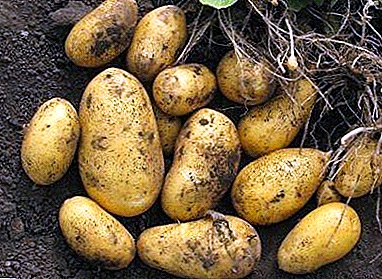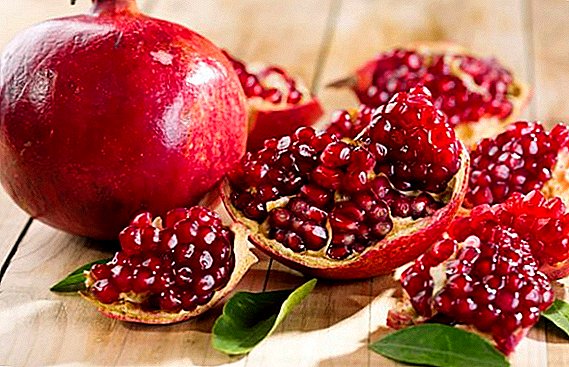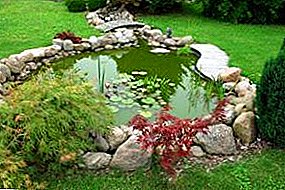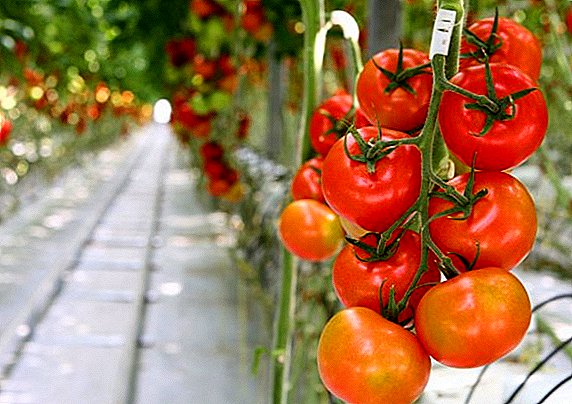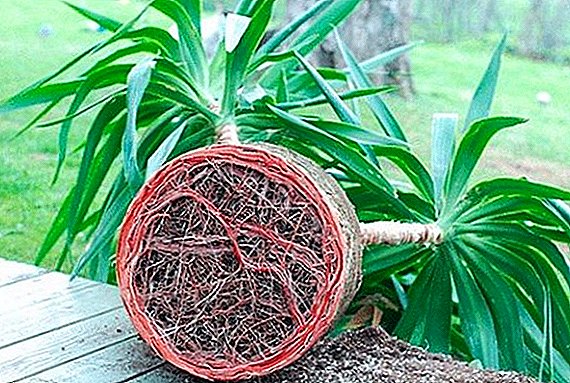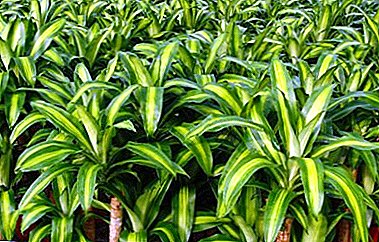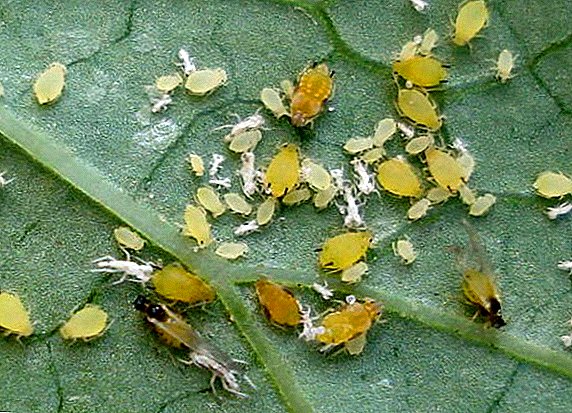 Healthy plants in the garden or in the greenhouse - the dream of all summer residents. However, due to the slightest missteps in the care and other negative factors, the bushes can attack various insect pests. If you find that small midges suddenly appeared on the vines, this is a sure signal of infection of the culture. Find out what threat these midges on cucumbers carry to your garden and how to deal with them.
Healthy plants in the garden or in the greenhouse - the dream of all summer residents. However, due to the slightest missteps in the care and other negative factors, the bushes can attack various insect pests. If you find that small midges suddenly appeared on the vines, this is a sure signal of infection of the culture. Find out what threat these midges on cucumbers carry to your garden and how to deal with them.
Midges on cucumbers: we study pests
Usually, "midges on cucumbers" means different types of small insect pestsplant near plants. At the same time, the time of year practically does not matter for parasites. Often pests come across in the purchase substrate.
Midges can be winged or arachnids. A colony of parasites tends to grow rapidly. Most often on the cucumber lianas there is a black midge, a white midge and a spider mite.
Black midge (its other name is gourd aphid) appears when watering the soil excessively, especially in cold weather. To deal with it is difficult, will require potent insecticides.
As for the white midge (or whitefly), the larvae are especially dangerous for plants. They are able to penetrate the soil and damage the root system of cucumber.

In addition to pests, you can observe other no less formidable parasites that look like midges. A clear example is spider mites. It is easy to find these types of parasites: pay attention to the foliage and stems. They turn yellow, dry up, sometimes turn black. In this situation, the main thing is to start treatment promptly, otherwise there is a risk of cucumber plants dying.
Did you know? The green cucumber we eat is actually an immature vegetable. The ancient Greeks bore this vegetable name "Aguros", which translates as "unripe", "green" - hence its modern name. The ripe cucumber is not suitable for human consumption, it is used only for seed.
Description, harm, methods of struggle
Let us dwell on the main types of blackflies on cucumbers and discuss what to do in the fight against them. If signs of infection with midges are detected, protective measures should be taken immediately. Sometimes you can get by with traditional recipes, and in some cases you will have to use chemicals.
Black midges (melon aphid)
Description. Black aphids - unpleasant for the gardeners to attack, but to cope with it is quite realistic. In the open ground, the parasite attacks cucumbers closer to the middle of summer, and in greenhouses - in the spring.
Insect length - from 1.2 to 1.9 mm. Aphids can have yellow-green, green, dark green and almost black colors. Parasites winter in the stage of larvae and wingless females, hiding under the basal leaves of weeds. In the spring, with an increase in air temperature above 5 ° C, the aphid leaves hibernation and begins to multiply, forming colonies of parasites on the underside of the leaves of weeds.

When overpopulation, when the insect is already lacking food, the aphid is reborn into winged forms. Black flies fly to the neighboring melon plants. The ideal place for feeding and reproduction of these parasites are leaves of cucumber bushes. Parasites migrated from weeds to cucumbers quickly form new and new clusters.
Harm. The main sign that a black louse is already present on cucumbers is sagging and dull foliage. When turning the sheet, you can easily see the accumulation of pests. Black midges are also found on flowers, ovaries and young shoots. If you do not take action in time, much of your harvest may be lost. The serious threat from a gourd aphid is that it It transports about 50 different bacteria..
It is also revealed that aphid lives in active symbiosis with ants. Ants feed on paddy (sweet secretions) aphids, thereby protecting their settlements. Ants harbor pests for the winter in anthills, and in the spring they spread it over fresh plants. Therefore, taking measures against black flies on cucumbers, at the same time it is necessary to fight ants that live near the flower beds.
Did you know? Reproduction in aphids occurs through live birth, that is, insects are born already pregnant. The egg cell inside the mother begins to develop even before the birth of the mother herself, and after 10-15 days a new aphid is born again.So, let's discuss what to do when a black gnaw is found on cucumbers and how to deal with them effectively.

Methods of struggle:
- Once a week, foliar top dressing with potash-phosphate fertilizers. The solution can be prepared independently: 20 g of superphosphate and 10 g of potassium chloride dilute in 10 liters of water. Carry out the treatment procedures until the pests are completely eliminated.
- In small areas for spraying, use various folk remedies. For this purpose, suitable infusions of wood ash, tobacco, potato leaves, garlic, bitter pepper, roots and stems of dandelions, leaves and stems of celandine, green parts and onion peel, stepsons of tomato, horse sorrel leaves. Fighting aphids will be more effective if you add a liquid soap to the spraying solution. Repeat the treatment once a week until the parasites disappear.
- In large areas, pests will have to be fought with chemical agents. Biological preparations Aktofit, Fitoverm, Bitoksibatsillin, as well as insecticides Kinmiks, Inta-vir, Arrivo, Detsis and others are effective against the melon-sprouts aphid.
Important! For the processing of cucumber plants, first of all consider the possibility of using biologics. This is the most safe means for people. Already 2 days after spraying with biological products, the fruit can be safely eaten. Using insecticides, it is necessary to remember about their toxicity. Therefore, they should be used no less than 20 days before the harvest of cucumbers. In addition, a long stay in the room where the processing of chemicals was carried out, is dangerous. Do not work without protective equipment: clothing, gloves, respirator, glasses.
White midges (whitefly)
Description. The whitefly (Aleirodid) is another dangerous pest of cucumbers. The length of the whitefly varies in the range of 1.3-3 mm. These small enemies of plants resemble miniature white moths or small moliform lepidoptera. Insects have 4 wings. The wings are covered with white, flour-like, dusty bloom. The larvae are motile, but as they develop they become immobile.
Harm. Some species of whitefly are dangerous quarantine destroyers of vegetable crops. The parasite on cucumbers more common in greenhouse conditions. The whitefly hides on the lower surface of the leaves and feeds on plant sap. At the same time on the surface of the sheet appear insect feces (pad), similar to a brilliant bloom.

Later, the soot mycelium develops, and the leaf surface becomes black. These black fungi are the main threat to plants. Often there is a stunted shoot growth.
Let's see how to identify white midge on seedlings and how to get rid of them. Eggs and larvae of pests can be easily detected on the foliage - they look like small grayish grains.
Methods of struggle. In the fight against whitefly, the following insecticides are effective: Actellic, Verticillin, Confidor, Mospilan, Pegasus, Fufanon, Phosbecid. Use drugs as directed in the instructions.
Use glue baits to catch mature individuals. To do this, paint pieces of plywood in yellow or white, then brush with castor oil, petroleum jelly or rosin with honey. You can also use purchased fly traps.

Today, biological measures to combat whitefly are increasingly being used. The natural enemies of the whitefly are the golden-eyed, ladybug and predatory bug Macrolofus. These insects are able to quickly destroy the parasites. Also practiced is placing in the greenhouse of the pupae of the encartia. The female enkartia lays its eggs in the body of the whitefly larvae. The effectiveness of this method is very high.
Herbal infusions are used as folk remedies. Garlic infusion is relatively effective against whitefly: chopped garlic (150 g) pour 1 liter of water. Infuse liquid for 5 days under tightly closed lid. Spray the bushes no more than 5 times per season.
Also try wash the bushes with clean water - whiteflies wash off well with water.
Important! Remember that the sooner you find signs of infestation of cucumber plants by parasites, the earlier and easier it will be to eliminate them. Folk remedies are effective only if there are not too many pests.
Spider mite
Description. Spider mites are small sucking parasites of the arachnid family, one of the worst enemies of cucumber plants. Ticks are orange, red or yellow. Body length does not exceed 1 mm. Parasites usually settle on the opposite surface of the leaf and multiply rapidly. The rate of reproduction depends on the air temperature: the higher it is, the more intense the parasites develop. In extreme heat or cold, females do not feed and migrate to secluded corners.
Harm. Spider mites feed on plant cells, causing damage to them. They are able to destroy plants in just 1-2 weeks. In addition, they infect the bushes with various bacteria.

Pest can be identified by yellowish spots on the foliage. Then, from multiple lesions, the leaves turn white. Sometimes you can see a thin web that covers parts of bushes. At the tops accumulates a lot of parasite colonies. If you do not take action, the leaves will wither and fall off.
Important! In extreme heat, it is necessary to spray the bushes every 7-8 days, otherwise the female that has matured during this time has time to lay new eggs.
 Methods of struggle. For the destruction of cucumber ticks, Akarin, Apollo, Fitoverm, Phosbecid chemicals are well suited. Penetrating the pest, these chemicals kill it. Spray the bushes need several times to complete destruction of the colonies.
Methods of struggle. For the destruction of cucumber ticks, Akarin, Apollo, Fitoverm, Phosbecid chemicals are well suited. Penetrating the pest, these chemicals kill it. Spray the bushes need several times to complete destruction of the colonies.
But, before resorting to chemical treatment, try to influence the parasites by biological or folk methods.
In the initial stages of infection, these methods give a good result. The natural enemies of spider mites are ladybugs.
In addition, there are cultures that scare away spider mites (tomato greens, marigolds, potato tops). These plants contain specific poisons. From them make tinctures, which are sprayed cucumbers. Try not to exceed the dosage, as this can damage the bushes.
You should also be aware that early planted cucumbers are less at risk for spider mite infection.
Pest prevention
Exist proven prevention methodsthat reduce the risk of blackflies on cucumbers:
- Provide plants a favorable moisture-temperature regime and good ventilation (especially in greenhouses and greenhouses). The recommended indoor temperature at night is -18-22 ° C. Do not allow sudden changes in temperature and humidity. If the weather is dry, spray the plants in open ground with water.
- Observe planting dates. Use only high quality seed.
- Before disembarking, carry out a set of measures to disinfect the greenhouse. For this purpose, use insecticides (for example, Metaphos, Karbofos, Decis).
- Do not place seedlings too close to each other.
- Do not place the cucumber next to zucchini, pumpkin, squash, carrots, eggplant, dill.
- Water the bushes in time, but do not let the ground flooding.
- Do not forget to feed the soil with fertilizers.
- Remove weeds regularly.


